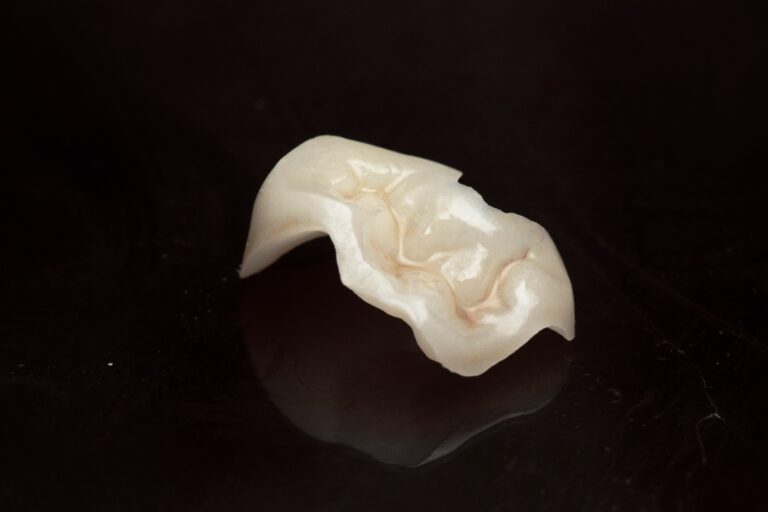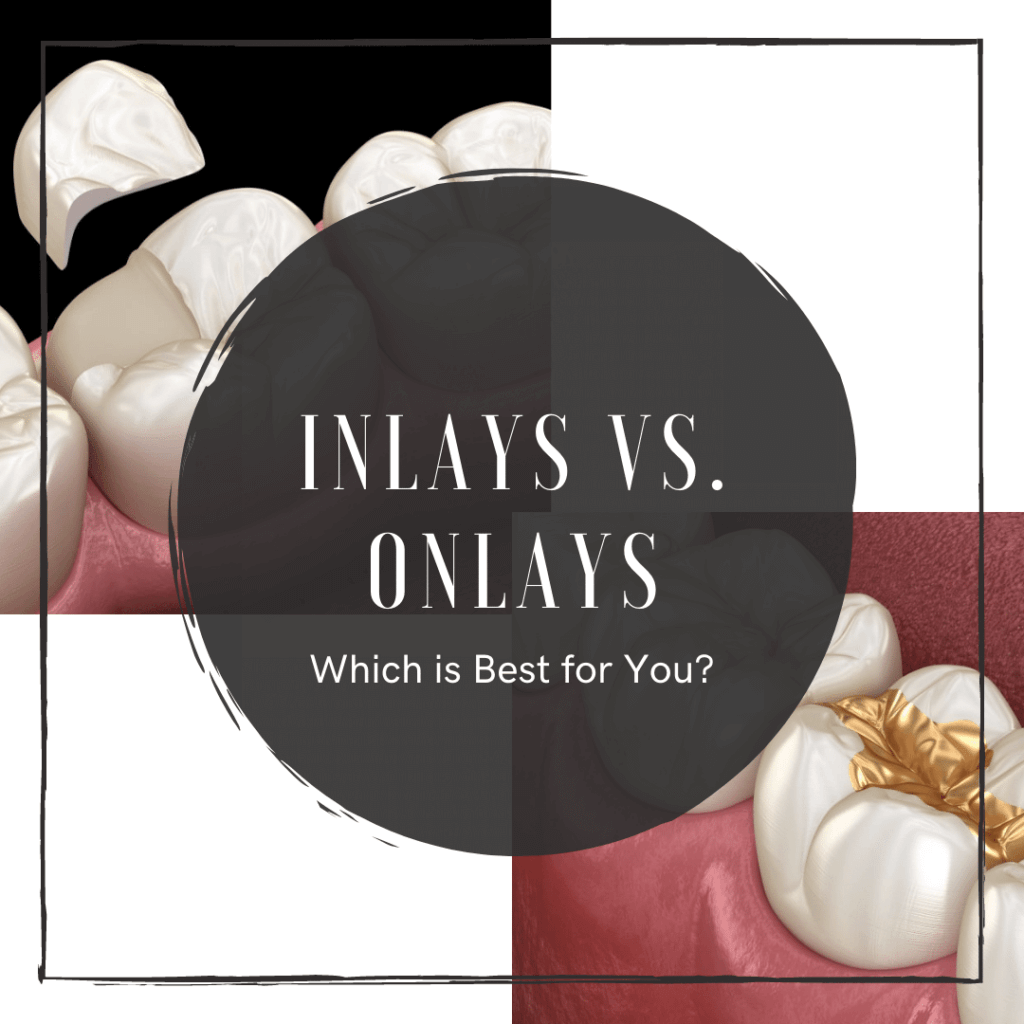When you have a cavity in your tooth, it’s important to get it fixed as soon as possible. If the decay is small, your dentist may be able to fix it with an indirect filling- also called an inlay or onlay. But what’s the difference between these two types of fillings? And which one is right for you? In this blog post, we’ll compare dental inlays and onlays and help you decide which one is best for your needs!
An indirect filling is necessary when the cavity is too large to be filled with a traditional dental filling, but not large enough where the tooth needs to be covered with a dental crown. Instead, an inlay or onlay can be used to restore the area in the least invasive way. A dental inlay is made to fit inside the cusp tips of your tooth so that it only covers the chewing surface of the tooth, while a dental onlay covers the chewing surface in addition to one or more cusps.

Inlays and onlays are made from different materials. Inlays can be made from gold, composite resin, or ceramic. Onlays can also be made from these materials, but are most commonly made from porcelain. Porcelain is a popular choice because it matches the natural color of your teeth and is very strong and durable.
When it comes to placing an inlay or onlay, your dentist will first numb the area and then remove any decay or damage. Once the tooth is prepared, your dentist will take an impression of the tooth and send it to a dental lab where they will create your inlay or onlay. In the meantime, you’ll be given a temporary filling. Once your inlay or onlay is ready, you’ll come back in for a second appointment where your dentist will place the restoration and make sure it fits properly.
So, which is best for you- an inlay or onlay? The answer depends on the size and location of your cavity as well as the severity of the damage. Inlays are typically used for smaller cavities while onlays are best for larger cavities. Onlays are also a good choice if the cavity is located in a visible area of your tooth or if there is extensive damage.
Some signs that you may need a dental inlay or onlay include:
- You have a large cavity that is too big for a dental filling but not large enough to warrant a dental crown
- The cavity is located in a visible area of your tooth
- There is extensive damage to the tooth
- Your tooth has been weakened by decay or injury and needs to be strengthened
No matter which type of indirect filling you choose, you can rest assured knowing that your tooth will be stronger and more protected from further decay. Inlays and onlays can last for many years with proper care. Be sure to brush and floss regularly and visit your dentist for regular checkups!
Do you have a cavity that needs to be filled? Contact our office today to schedule an appointment! We would be happy to help you choose the best type of indirect filling for your needs.




